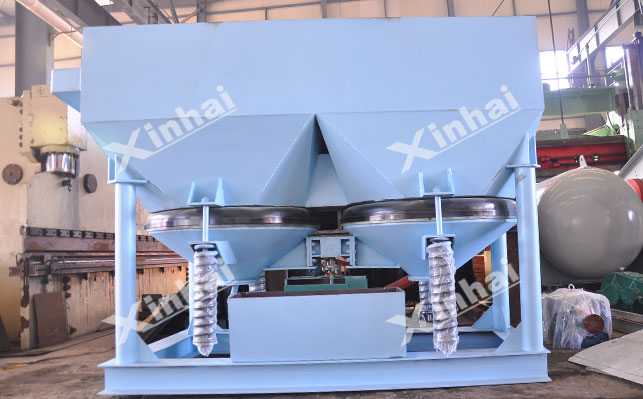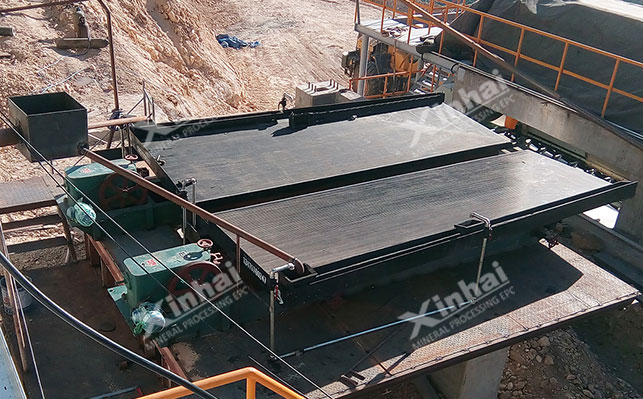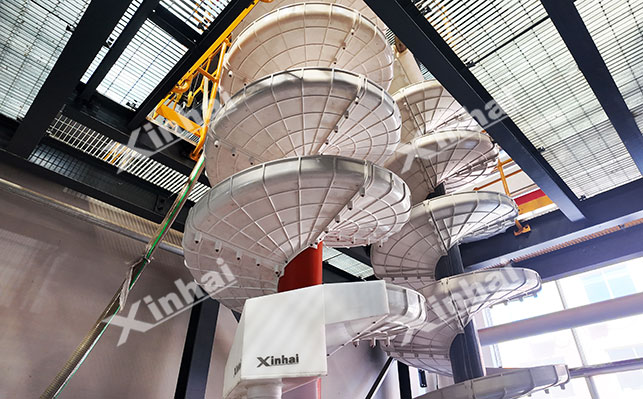
15311826613
Click to add WeChatPegmatite feldspar ore is an important source of feldspar resources, and is used in glass, ceramics, abrasives and other industries. With the rapid development of related industries, the demand for high-quality feldspar ore is growing. Therefore, the technical requirements are also constantly updated. Gravity separation, as one of the commonly used technologies for feldspar ore dressing, has the advantages of simple process, low energy consumption and no pollution. This article will focus on the gravity separation of pegmatite feldspar ore.
The key to gravity separation is that different minerals show different movement characteristics in the gravitational field or centrifugal field due to their density differences. In the gravitational field, mineral particles are subject to the combined effects of gravity, medium buoyancy and medium resistance. According to Newton's second law, the sedimentation rate of mineral particles is closely related to the mineral density, particle size and the properties of the medium. Generally speaking, mineral particles with higher density have a significantly faster sedimentation rate than feldspar with relatively lower density under the same conditions. In the centrifugal field, the centrifugal force on the mineral particles is related to the mass of the particles, the radius of rotation and the angular velocity. By controlling the parameters of the centrifugal equipment, minerals of different densities can be moved along different trajectories under the action of centrifugal force, thereby achieving separation.
At present, the commonly used methods for feldspar gravity separation are mainly jigging gravity separation, shaking table gravity separation, chute gravity separation, and occasionally centrifugal gravity separation.

Jigging gravity separation is to use a jig to process relatively coarse feldspar ores, and to form an alternating water flow in the jig chamber by periodically changing the speed and direction of the water flow. When the slurry enters the jig chamber, under the action of this alternating water flow, the mineral particles are layered according to density and particle size. For coarse-grained feldspar ores (generally larger than 0.5mm), impure minerals with higher density, such as barite, will quickly settle to the lower layer due to their own gravity when the rising water flow is weak; while minerals with lower density, such as feldspar, will be carried to the upper layer when the rising water flow is strong. With the periodic changes in the water flow, the mineral particles are continuously stratified and redistributed, and finally stratified by density.
The equipment is easy to operate. The operator only needs to adjust the frequency, amplitude and feed rate of the water flow to control the jig process. However, the jig has a poor separation effect on fine-grained minerals (less than 0.074mm). In the beneficiation of pegmatite feldspar ores, the jig is mainly used to initially separate impure minerals with higher density, such as barite, to reduce the burden of subsequent beneficiation operations and improve the selected grade.

The shaking table is suitable for processing fine-grained (particle size range 0.03-2mm) pegmatite-type feldspar ores. During operation, it uses the combined effect of mechanical shaking of the shaking table and water flushing. The bed surface of the shaking table is inclined, and it performs asymmetric reciprocating linear motion driven by the mechanical transmission device. The slurry is evenly fed from the feeding end of the shaking table, and at the same time, the lateral water flow flows evenly from one side of the bed surface. Under the combined effect of the mechanical shaking of the bed surface and the lateral water flow, the mineral particles move in a complex trajectory on the bed surface according to density and particle size. Mineral particles with higher density and coarser particle size move faster on the bed surface due to their greater inertia, and gradually move to the concentrate end; while mineral particles with lower density and finer particle size gradually move to the tailing end under the action of water flow. After multiple stratification and zoning, the effective separation of feldspar and quartz and other minerals with similar density is finally achieved.
The shaking table has a high sorting accuracy and can finely sort minerals with small density differences. By adjusting the parameters of the shaking table such as slope, stroke, number of strokes and water flow rate, feldspar and quartz can form clear zones on the bed surface, thereby obtaining high-grade feldspar concentrate. In the beneficiation of pegmatite-type feldspar ores, shaking tables are often used for concentrating operations after jigging to further improve the grade of feldspar concentrate to meet the market demand for high-quality feldspar products.

The chute has a simple structure and is mostly used to process coarse-grained and large-volume ores in feldspar ore re-selection operations. During operation, sorting is mainly based on the difference in the settling speed of the ore particles in the inclined chute. The slurry is fed from the upper end of the chute and flows downward along the trough under the action of gravity. During the flow process, the mineral particles with higher density settle faster and gradually approach the bottom of the trough; while the mineral particles with lower density settle slower and remain suspended in the upper layer of the slurry. As the slurry flows in the chute, minerals of different densities gradually separate and eventually achieve separation.
In the beneficiation of pegmatite feldspar ores, chutes are mostly used to pre-discard some of the tailings with higher density. In addition, the sorting accuracy of the chute is relatively low, and it is difficult to achieve high-precision separation for minerals with similar densities. Therefore, it is also used as a preliminary enrichment equipment for gravity separation.
The mineralogical characteristics of pegmatite feldspar ores determine that gravity separation has good applicability in the beneficiation of this type of ore. Different gravity separation methods are suitable for pegmatite feldspar ores with different particle size ranges. By reasonably selecting gravity separation methods and optimizing process parameters, the grade and recovery rate of feldspar ores can be effectively improved. In actual production, appropriate gravity separation methods or multiple gravity separation methods should be comprehensively selected according to the specific mineralogical characteristics of pegmatite feldspar ores.